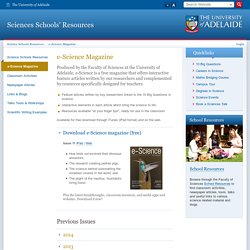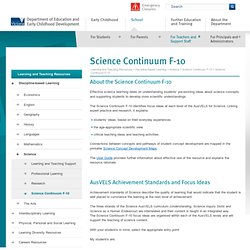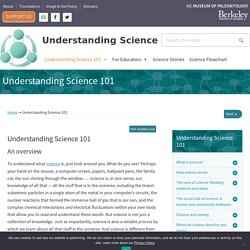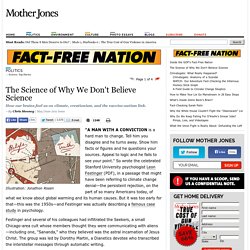

Sciences Schools' Resources. Produced by the Faculty of Sciences at the University of Adelaide, e-Science is a free magazine that offers interactive feature articles written by our researchers and complemented by resources specifically designed for teachers.

Feature articles written by key researchers linked to the 10 Big Questions in science Interactive elements in each article which bring the science to life Resources available "at your finger tips", ready for use in the classroom Available for free download through iTunes (iPad format) and on the web. Issue 11 iPad | Web How birds out-evolved their dinosaur ancestors; The research creating perkier pigs; The science behind outsmarting the smartest viruses in the world; and The plight of the nautilus; Australia's living fossil. Plus the latest breakthroughs, classroom resources, and useful apps and websites. Download it now! Previous Issues Feedback or Viewing Issues? If you would like to provide feedback or having issues viewing e-Science Magazine, please contact us. Science Background Resource. Physics: Children's misconceptions. Science Continuum P-10.
About the Science Continuum F-10 Effective science teaching relies on understanding students’ pre-existing ideas about science concepts and supporting students to develop more scientific understandings.

The Science Continuum F-10 identifies focus ideas at each level of the AusVELS for Science. Linking expert practice and research, it explains: students’ ideas, based on their everyday experiences the age-appropriate scientific view critical teaching ideas and teaching activities. Connections between concepts and pathways of student concept development are mapped in the printable Science Concept Development Maps. The User Guide provides further information about effective use of the resource and explains the resource rationale. AusVELS Achievement Standards and Focus Ideas Achievement standards of Science describe the quality of learning that would indicate that the student is well placed to commence the learning at the next level of achievement. My student/s are: Science Concept Development Maps. Understanding Science. To understand what science is, just look around you.

What do you see? Perhaps, your hand on the mouse, a computer screen, papers, ballpoint pens, the family cat, the sun shining through the window …. Science is, in one sense, our knowledge of all that — all the stuff that is in the universe: from the tiniest subatomic particles in a single atom of the metal in your computer's circuits, to the nuclear reactions that formed the immense ball of gas that is our sun, to the complex chemical interactions and electrical fluctuations within your own body that allow you to read and understand these words. But just as importantly, science is also a reliable process by which we learn about all that stuff in the universe. However, science is different from many other ways of learning because of the way it is done. Book - Probing Understanding.
Science Writing. Bringing science to people and people to science. JEI is a scientific journal for middle and high school scientists. The Science of Why We Don't Believe Science. Illustration: Jonathon Rosen "A MAN WITH A CONVICTION is a hard man to change.

Tell him you disagree and he turns away. Show him facts or figures and he questions your sources. Appeal to logic and he fails to see your point. " So wrote the celebrated Stanford University psychologist Leon Festinger (PDF), in a passage that might have been referring to climate change denial—the persistent rejection, on the part of so many Americans today, of what we know about global warming and its human causes.
Festinger and several of his colleagues had infiltrated the Seekers, a small Chicago-area cult whose members thought they were communicating with aliens—including one, "Sananda," who they believed was the astral incarnation of Jesus Christ. Through her, the aliens had given the precise date of an Earth-rending cataclysm: December 21, 1954. Festinger and his team were with the cult when the prophecy failed. Read also: the truth about Climategate.At first, the group struggled for an explanation. Journal of Youth in Science. Home - Encyclopedia of Australian Science. Asia-Pacific Forum on Science Learning and Teaching.
The Relevance of Science Education. Australian Science Media Centre.